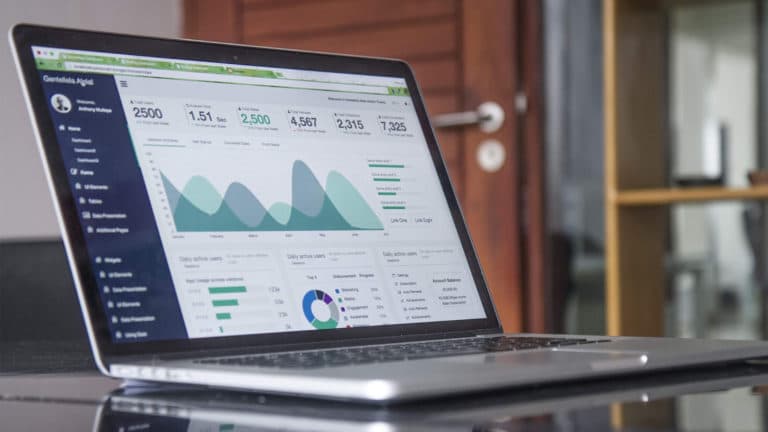If you’re a B2B startup, you’ve either thought of using email as a customer acquisition strategy, or you’re already doing it. This marketing channel is so ubiquitous, and in some ways saturated, that it feels like advertising in the Adwords heydey: everyone’s either doing it or knows what it is, and only a few companies are doing it extremely well.
As someone who’s led outbound B2B sales campaigns for 70+ companies and been recognized by Sales Hacker an industry leader, I’d like to teach you the high-level thought process I use to create effective outbound marketing systems, so you can walk and talk like the best.
Cold Emailing vs. Traditional Email Marketing
If you’re reading this and thinking that B2B cold email is similar to traditional email marketing, start by reframing your perspective.
Almost all marketers are used to building an email list by putting out content and/or ads, and then trying to get people to subscribe. This is a fine tactic in itself, and RevenueZen offers (and does) plenty of these marketing services, but those aren’t the focus of this article and this list-building technique has its own limitations.
Cold emails, in contrast, are sent to people who have NOT opted in to hear from you. Therefore, you need to treat them differently. When cold emailing someone, you need to be extremely engaging, relevant, concise, and personable.
The goal of a cold email is to get the person to reply, not simply click!
That fact in itself changes almost everything about how cold emails should be structured. Your tone, CTA, length, HTML vs plain text, and where you got the email from in the first place — cold emailing changes all of it.
Start by Defining Your Audience
The first thing you should do when preparing to send a cold email is figure out who you want to talk to. Here’s an example of a customer segment that’s not specific enough:
Marketing leaders at tech companies.
What kind of marketing? VPs, or Managers? What kind of technology? Where are they located? What business models are better or worse fits for you? What specialties should your ideal marketing leader be good at vs worse at? What technologies do they use?
Here’s an example that’s overly-specific:
People with the exact title ‘Vice President of Brand Marketing’ in Cincinnati, OH that have been using Optimizely for between 1 and 5 years, who have been in their role between 1 and 6 months, whose companies have recently been in the news for a focus on digital transformation.
Much too specific. You’re going to be spending all of your time on list-building for a tiny audience. You’re better off not building a list at all. Just send one-off, customized emails. If your market is extraordinarily specific, you should be using an entirely-custom strategy including multiple channels like social media, direct mail, email, phone calls, and singing door-to-door telegrams.
Only half-joking about that last one.
The idea here is to build a customer segment that is likely to have specific challenges that your product addresses excellently. Keep in mind that ultra-specific requirements are more trouble than they’re worth, but go too broad and you won’t be able to write a specific-enough campaign to actually resonate with people.
With customer segment and persona in hand, it’s time to build your contact list.
B2B Email Lists: Build, Don’t Buy
There are plenty of places to purchase a static list from. Don’t bother. Unlike sending newsletters to a subscription list, your goal here is to build a fresh, current list of emails by using a combination of software and/or contractor teams to research who the right decision-makers are, at the right types of companies you want to be going after. Lead generation strategies have totally changed in 2020 – consider beefing up your inbound and SEO work to bolster any outbound gameplans.
Unlike personal emails, which rarely change, business emails change often. People leave jobs and change titles. A B2B email list decays in quality by single-digit percentages each month, kind of like your new car that loses value as soon as you drive it off the lot.
Plenty of tools and offshore contract teams exist for this purpose, and all of them in different ways let you specify the types of companies and people you want to go after, and does a reasonably good job (the better the quality, the more expensive the product!) of returning curated lists of contact information back to you.
Now, with list building taken care of, let’s talk about how to write great emails that are relevant to your segment.
3 Principles of Writing Great B2B Sales Emails
- Be relevant
- Be concise
- Make it easy
If you follow these rules, you’ll be golden. Each one of them deserves a whole article in itself, but I’ll sum them up for you. leadiQ believes that good emails should answer these 4 questions:
- How am I special to you?
- Why are you contacting me?
- Who are you?
- What do you want me to do with this message?
Check out 8 examples of cold emails they actually sent to prospects. They’re pretty great.
Be Relevant
“Relevant” means to ask yourself, and to ask yourself again, harder – whether the person reading this email actually cares. ACTUALLY. CARES. About what you’re saying to them. Are you writing about a problem that this professional struggles with, in a way that hasn’t been solved yet?
Remember, as a sales leader you may not be able to do this alone. If you’re the CEO, you’re probably also the de facto Head of Product. If you’re a VP Sales, you may want to involve the head of marketing and/or product, because you need to deeply and intimately understand what your customers are going through, if you’re going to speak their language.
Literally, speak their language. For example, do they say “enterprise sales” or “field sales”? Do they call it “HRIT” or “HR tech”? Not just at a granular level but at every level, try to look at the words they use and imitate those.
Feel free to read job descriptions and LinkedIn profiles pertaining to the titles and personas you’re going after if you need to know how they describe themselves and their problems, challenges, and goals.
Be Concise
Concise means using as few words as you can to get your point across. Note that I’m not denigrating long-form email copy; it can work well! Just make sure that whatever length you add, has its own value.
For example, we have limited real estate to work within our inbox. Do you think this is a good use of space?
“Hello Alex, I hope this message finds you well. My name is Darren, and I am a senior business development specialist with ACME. I apologize for interrupting your day, but I thought this offer would be of interest to you.”
Nope. It’s fluff. Replace most of that with ‘stuff the prospect’ cares about. Trim until you can’t trim any more without losing value.
Make it Easy
…for the PROSPECT! Make it easy for them to do one specific thing. That’s your goal. Get them to take an action that they can easily do from an iPhone. Don’t make them work too hard.
Go back to the first principle, Be Relevant, where you visualize yourself in the prospect’s shoes. How are they thinking and feeling? Are they in front of a computer, giving you 100% attention, or are they a busy executive in between meetings? Are they checking email in the morning and evening, on their phone? Do they take the subway to work, or do they drive? Where and in what mindset are they going to open this?
In consideration of the above factors, ask yourself whether the Call to Action (CTA) of your email is very easy for them to act on. Asking them to read a piece of content might be a good solution if you send it to a Director mid-day, but a CEO won’t read it. A CEO, however, might open the email on her iPhone and hit “forward” to one of her VPs, without much context.
Think about how your prospect lives, feels, and acts. Make it easy for them to give you their time.




